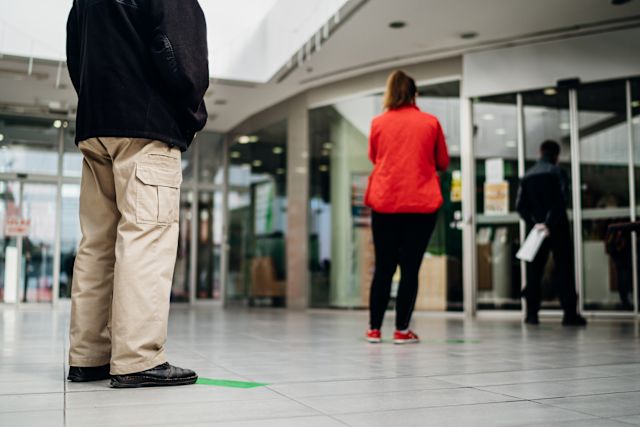Updated on February 3, 2025.
During the COVID pandemic, people in the United States were asked to practice social distancing to help control the spread of disease. For many, it was the first time they had heard the term.
So, what is social distancing, exactly? And how can it help to keep people healthy?
Social distancing defined
Social distancing is the practice of creating physical distance between yourself and other people to reduce the risk of catching or spreading a respiratory infection. These infections are spread via contaminated droplets and particles. They’re emitted when infected people cough or sneeze, and sometimes when they breathe or speak.
Depending on several different factors, droplets can typically travel a few feet before settling. They may land in a nearby person’s mouth, nose, or eyes, leading to infection.
Though it’s not as common as airborne spread, droplets can also land on surfaces such as countertops and tables. If you touch a contaminated surface and then touch your mouth, nose, or eyes, you can become infected. Some germs can last for hours or even days on certain surfaces.
Social distancing may help you avoid becoming infected by these germs. It can involve:
- Keeping a set distance from others when you’re in public
- Avoiding public areas where you can’t maintain a certain distance from others
- Avoiding large gatherings, such as parties or reunions
- Staying home when you’re sick
- Keeping away from others who are sick
When an illness is spreading, social distancing is often used along with other preventative measures. These can include:
- Frequent hand washing
- Not touching your face with unwashed hands
- Covering coughs and sneezes
- Improving air flow indoors
- Wearing a mask in public places
- Getting vaccinated for the disease, if a vaccine is available
Why distancing is important
Social distancing may help reduce the total number of people who become infected with a respiratory illness. It can help slow its spread, which could ultimately save lives.
This is important, because If hospitals and urgent care centers are burdened with a high volume of sick patients, the care given to those with severe disease or complications may be compromised. Healthcare providers may become overwhelmed. There may be a shortage of essential medical supplies, ventilators, and other life-saving equipment.
When COVID was declared to be a pandemic in 2020, for example, U. S. health officials asked the public to practice social distancing. They were attempting to prevent the disease from overwhelming healthcare facilities, many of which were swamped by patients and facing shortages.
Though officials stopped recommending it in 2022 after a vaccine became widely available, research suggests social distancing was an effective tool early on. It helped to control the spread of COVID, especially when combined with other preventive measures.
In short, social distancing can help slow the spread of the infection so that public officials and healthcare workers have time to respond effectively to the developing situation. It’s a personal and group effort to keep yourself and the people around you healthy—a positive way you can help make a difference for your community.







